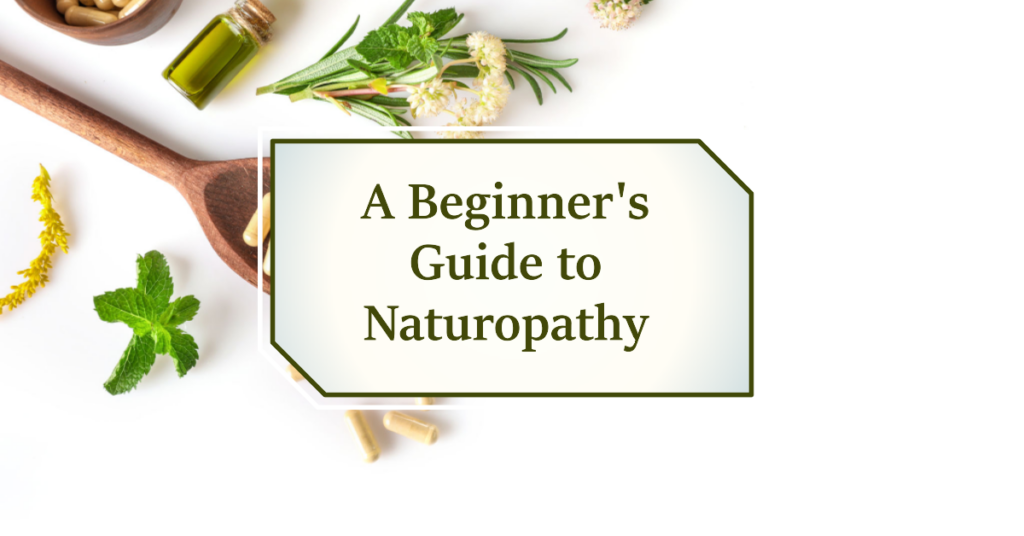8 Ways of Creating Healthy Boundaries in Relationships

Table of Contents
Creating healthy boundaries in relationships is a vital skill that contributes to our overall well-being and the quality of our connections with others. Whether it’s in romantic partnerships, friendships, family ties, or professional relationships, understanding and implementing boundaries can lead to more fulfilling and balanced interactions. In this comprehensive guide, we’ll explore eight effective ways to establish and maintain healthy boundaries in various aspects of your life.
As we delve into this topic, it’s worth noting that developing boundary-setting skills is an integral part of personal growth and holistic health. For those interested in deepening their understanding of holistic approaches to well-being, the Holistic Health Practitioner course offers valuable insights into creating balance in all areas of life, including relationships.
1. Understanding Boundaries in Relationships

Before we dive into the strategies for creating healthy boundaries, it’s crucial to understand what boundaries are and why they matter. Boundaries are the limits and rules we set for ourselves in relationships. They define where we end and where others begin, helping us maintain our individuality while fostering healthy connections.
Boundaries can be:
- Physical (personal space, touch)
- Emotional (sharing feelings, emotional support)
- Mental (thoughts, values, opinions)
- Time-related (how we spend our time)
- Material (possessions, money)
Setting clear boundaries is essential for maintaining self-respect, reducing stress, and fostering mutual understanding in relationships. As highlighted in this comprehensive guide on setting healthy boundaries, establishing these limits can significantly improve the quality of our relationships and overall life satisfaction.
2. Cultivate Self-Awareness

The foundation of creating healthy boundaries lies in self-awareness. To set effective boundaries, you need to understand your own needs, values, and limits. This involves:
- Reflecting on your personal values and beliefs
- Identifying your emotional triggers
- Recognizing your physical and emotional limits
- Understanding your personal goals and priorities
Self-awareness is a journey, not a destination. It requires ongoing introspection and a willingness to learn about yourself. One effective way to develop self-awareness is through mindfulness practices. These can help you tune into your thoughts, feelings, and bodily sensations, providing valuable insights into your needs and boundaries.
For those interested in exploring holistic approaches to self-awareness, the 5 tips for a healthy lifestyle article offers valuable insights that can complement your boundary-setting journey.
3. Practice Clear Communication

Once you’ve identified your boundaries, the next crucial step is communicating them clearly to others. Effective communication is key to ensuring that your boundaries are understood and respected. Here are some strategies for clear boundary communication:
- Use “I” statements to express your needs and feelings
- Be direct and specific about your boundaries
- Choose the right time and place for important conversations
- Listen actively to others’ responses and concerns
- Be prepared to explain the reasons behind your boundaries
Remember, communication is a two-way street. While asserting your own boundaries, it’s equally important to be open to hearing and understanding others’ boundaries. This mutual respect forms the foundation of healthy relationships.
A study published in the Journal of Social and Personal Relationships found that couples who communicate their boundaries effectively report higher relationship satisfaction and lower levels of conflict. This underscores the importance of clear communication in maintaining healthy relationships.
4. Respect Others’ Boundaries

Creating healthy boundaries isn’t just about setting your own limits; it’s also about respecting the boundaries of others. This reciprocal respect is crucial for building trust and maintaining positive relationships. Here’s how you can show respect for others’ boundaries:
- Ask for consent before crossing personal boundaries
- Pay attention to non-verbal cues that might indicate discomfort
- Avoid pressuring others to change their boundaries
- Acknowledge and apologize if you unintentionally cross a boundary
- Be open to feedback about your behavior
Respecting others’ boundaries also means being mindful of different cultural and personal perspectives on boundaries. What might be acceptable in one culture or relationship might not be in another. Cultivating cultural sensitivity and open-mindedness can help you navigate these differences respectfully.
For insights on setting boundaries within family relationships, which can often be complex, the article on how to set boundaries with family provides valuable guidance.
5. Learn to Say No

One of the most powerful tools in maintaining healthy boundaries is the ability to say “no” when necessary. Many people struggle with this, fearing that they might disappoint others or miss out on opportunities. However, learning to say no is crucial for protecting your time, energy, and well-being.
Here are some tips for saying no effectively:
- Be clear and direct in your refusal
- Avoid over-explaining or making excuses
- Offer alternatives if appropriate, but don’t feel obligated to do so
- Remember that saying no to one thing means saying yes to something else (like your own well-being)
- Practice saying no in low-stakes situations to build confidence
It’s important to remember that saying no doesn’t make you a bad person. In fact, it’s a sign of self-respect and honesty in relationships. By saying no to things that don’t align with your values or exceed your capacity, you’re actually saying yes to maintaining your boundaries and preserving your well-being.
6. Manage Your Time and Energy

Effective time and energy management is a crucial aspect of maintaining healthy boundaries. It involves being intentional about how you allocate your resources and ensuring that you’re not overextending yourself at the expense of your well-being.
Here are some strategies for better time and energy management:
- Prioritize your commitments based on your values and goals
- Learn to delegate tasks when possible
- Schedule time for self-care and relaxation
- Set realistic expectations for what you can accomplish
- Use time-blocking techniques to manage your schedule
Remember, your time and energy are finite resources. By managing them wisely, you’re reinforcing your boundaries and ensuring that you have enough reserves for the things that matter most to you.
For those interested in exploring how to balance personal growth with other life commitments, the article on how to make the most of a holistic online course offers valuable insights that can be applied to various aspects of life.
7. Establish Digital Boundaries

In our increasingly connected world, setting digital boundaries has become essential for maintaining healthy relationships and personal well-being. Digital boundaries involve managing your online presence, communication, and consumption of digital content.
Here are some ways to establish healthy digital boundaries:
- Set specific times for checking emails and social media
- Use “Do Not Disturb” features on your devices during personal time
- Be mindful of what you share online and with whom
- Establish clear expectations for digital communication in your relationships
- Take regular digital detoxes to reconnect with the physical world
Digital boundaries are particularly important in professional settings. The article on setting healthy boundaries at work provides valuable insights that can be applied to digital workplace interactions as well.
Remember, technology should enhance your life, not control it. By setting clear digital boundaries, you’re taking charge of your online interactions and protecting your mental space.
8. Seek Support When Needed

Creating and maintaining healthy boundaries can be challenging, especially if you’re not used to it. It’s important to remember that seeking support is a sign of strength, not weakness. Whether you’re dealing with boundary issues in personal relationships or professional settings, don’t hesitate to reach out for help.
Sources of support can include:
- Trusted friends and family members
- Professional therapists or counselors
- Support groups focused on healthy relationships
- Mentors or coaches in professional settings
- Self-help resources and books on boundary-setting
For those dealing with particularly challenging boundary issues, such as in codependent relationships, specialized resources like the guide on setting boundaries with codependent individuals can provide targeted advice and strategies.
Remember, seeking support is not just about getting help with current boundary issues. It’s also about building a network that can support your ongoing journey of personal growth and healthy relationship building.
9. Maintain Consistency

Consistency is key when it comes to maintaining healthy boundaries. Once you’ve established your boundaries, it’s important to uphold them consistently across different situations and relationships. This consistency helps others understand and respect your limits, and reinforces your own commitment to self-care and healthy relationships.
Here are some tips for maintaining consistency in your boundaries:
- Regularly review and reassess your boundaries
- Be prepared to reinforce your boundaries when challenged
- Apply your boundaries equally across different relationships
- Be patient with yourself and others as you adapt to new boundaries
- Celebrate the positive outcomes of maintaining healthy boundaries
Remember, consistency doesn’t mean rigidity. As you grow and your circumstances change, your boundaries may need to evolve too. The key is to remain true to your core values and needs while being open to necessary adjustments.
Conclusion
Creating healthy boundaries in relationships is a vital skill that contributes to our overall well-being and the quality of our connections with others. By understanding the importance of boundaries, cultivating self-awareness, communicating clearly, respecting others’ limits, learning to say no, managing our time and energy, establishing digital boundaries, seeking support when needed, and maintaining consistency, we can build more fulfilling and balanced relationships in all areas of our lives.
Remember, setting and maintaining boundaries is an ongoing process. It requires patience, practice, and sometimes courage. But the rewards – improved self-esteem, reduced stress, and healthier relationships – are well worth the effort.
As you continue on your journey of personal growth and relationship building, consider exploring holistic approaches to health and well-being. Resources like the official certificate for holistic health practitioner training course can provide valuable insights into creating balance in all aspects of life, including relationships.
Explore More
- 5 Tips for a Healthy Lifestyle
- How to Make the Most of a Holistic Online Course
- Top 10 Natural Supplements for Better Health
References
- https://scholarworks.smith.edu/cgi/viewcontent.cgi?article=1947&context=theses
- https://www.greatplacetowork.in/how-blurred-boundaries-between-work-and-personal-life-contribute-to-employee-burnout
- https://news.virginia.edu/content/study-overbearing-parents-lead-long-term-struggles-relationships-education










Responses